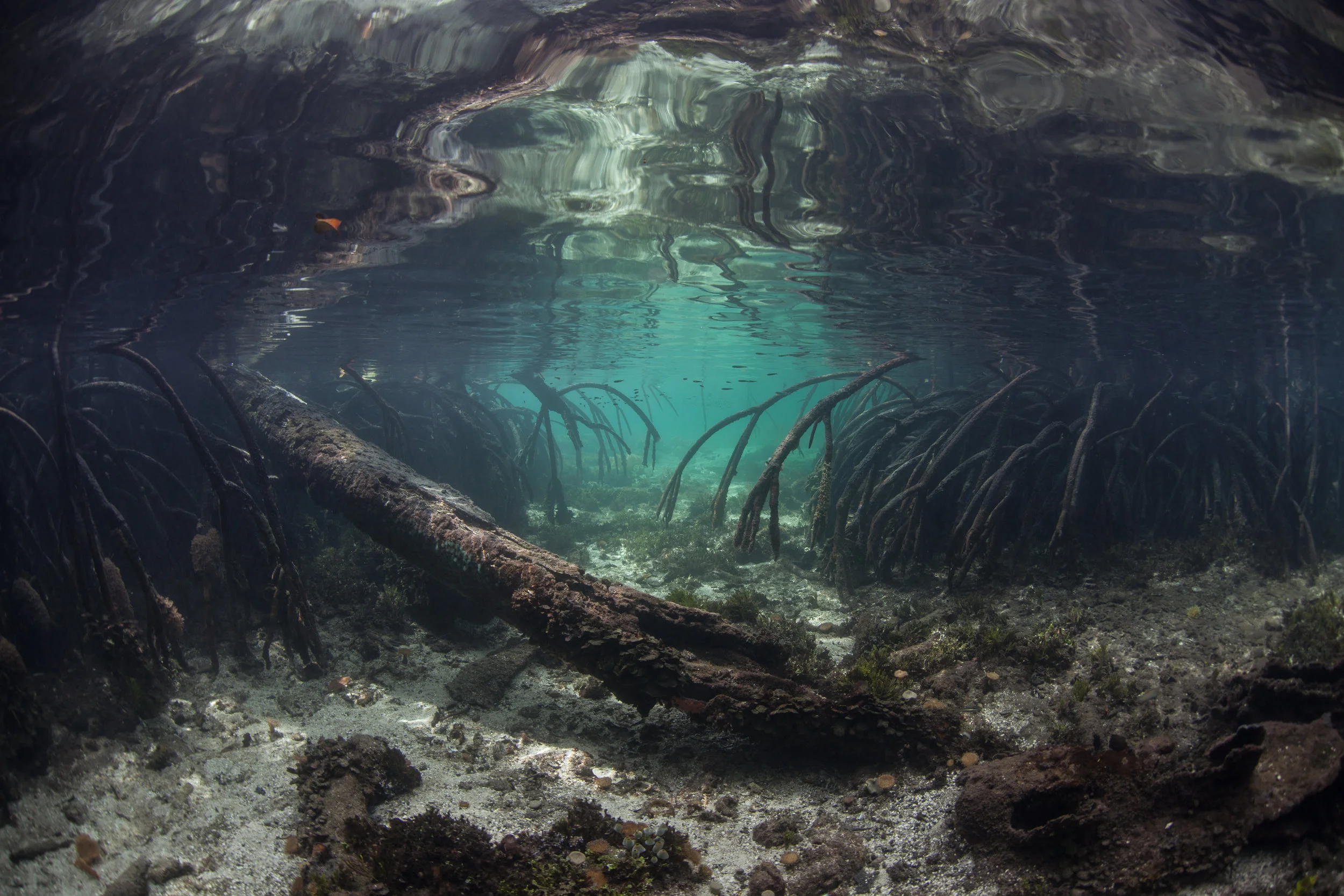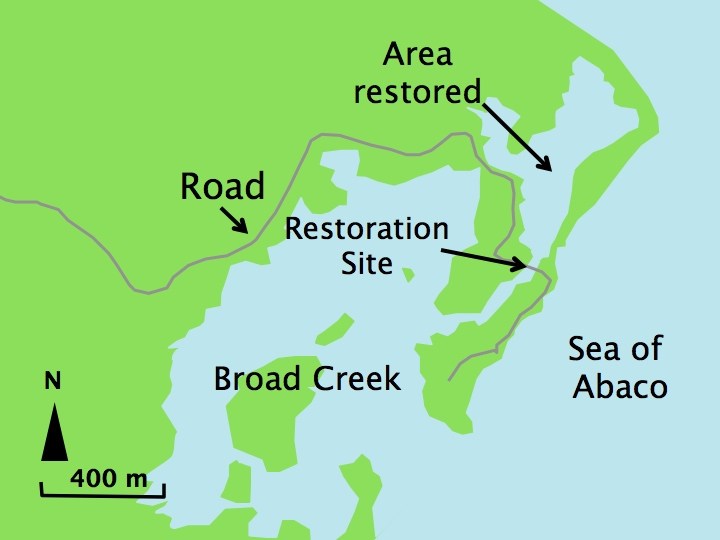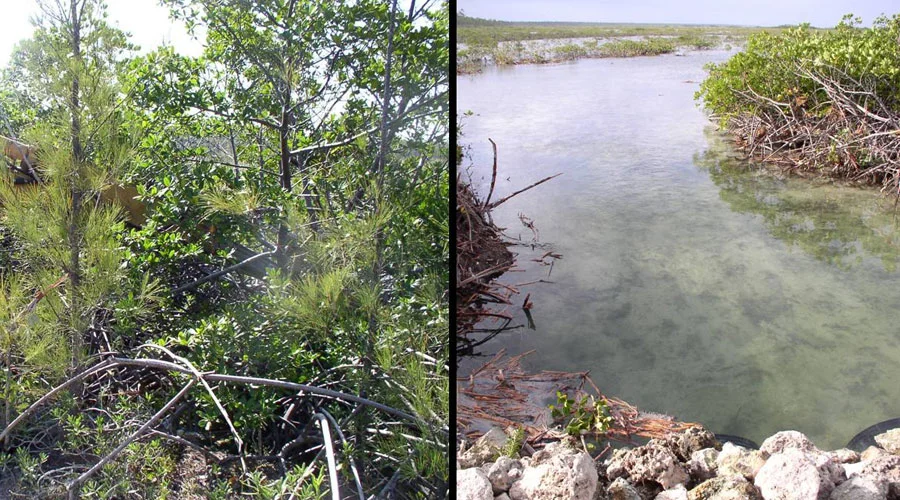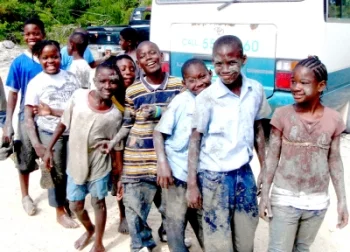Tidal creeks and mangrove wetlands are among the most important habitats in The Bahamas because of the important role they play as nurseries for juvenile and adult fishes and invertebrates. These areas provide a safe home for species such as juvenile Nassau Grouper, and crawfish before these individuals move to deeper waters as adults. Unfortunately, human impacts are responsible for significant wetland degradation across the country, including direct removal of mangroves, dredging and pollution. But perhaps the most common problem in The Bahamas is fragmentation – the result of some obstruction, typically a road, that blocks the flow of water from the ocean into the wetland. Without this flow of water, sediment builds up and the water becomes extremely hot, salty, and depleted in oxygen, creating a harsh place for animals to live. Fragmentation results in drastic changes to the environment and the loss of critical fish nurseries. The good side of segmentation is that with the proper resources it can be solved, creating more habitat for marine creatures without an negatives results.
Ten Years On
We headed to Andros last week to check up on previous projects and think about future directions. I was excited to see how well our first two small creek restoration projects looked. When you restore flow to the creeks through a narrow channel, the current is so concentrated that it apparently keeps mangroves from again encroaching. This maintains habitat for dozens and dozens of juvenile snapper, and feeding areas for motile fishes such as bonefish and jacks. Here is some more information on previous Abaco and Andros restoration projects.
Tidal Creek Restoration
With dozens of fragmented wetland ecosystems in the Bahamas (typically due to roads built without bridges or culverts), there are numerous opportunities to manipulate the degree of connectivity through restoration. This provides for habitat reclamation, as well as an excellent opportunity for hypothesis-driven research.





